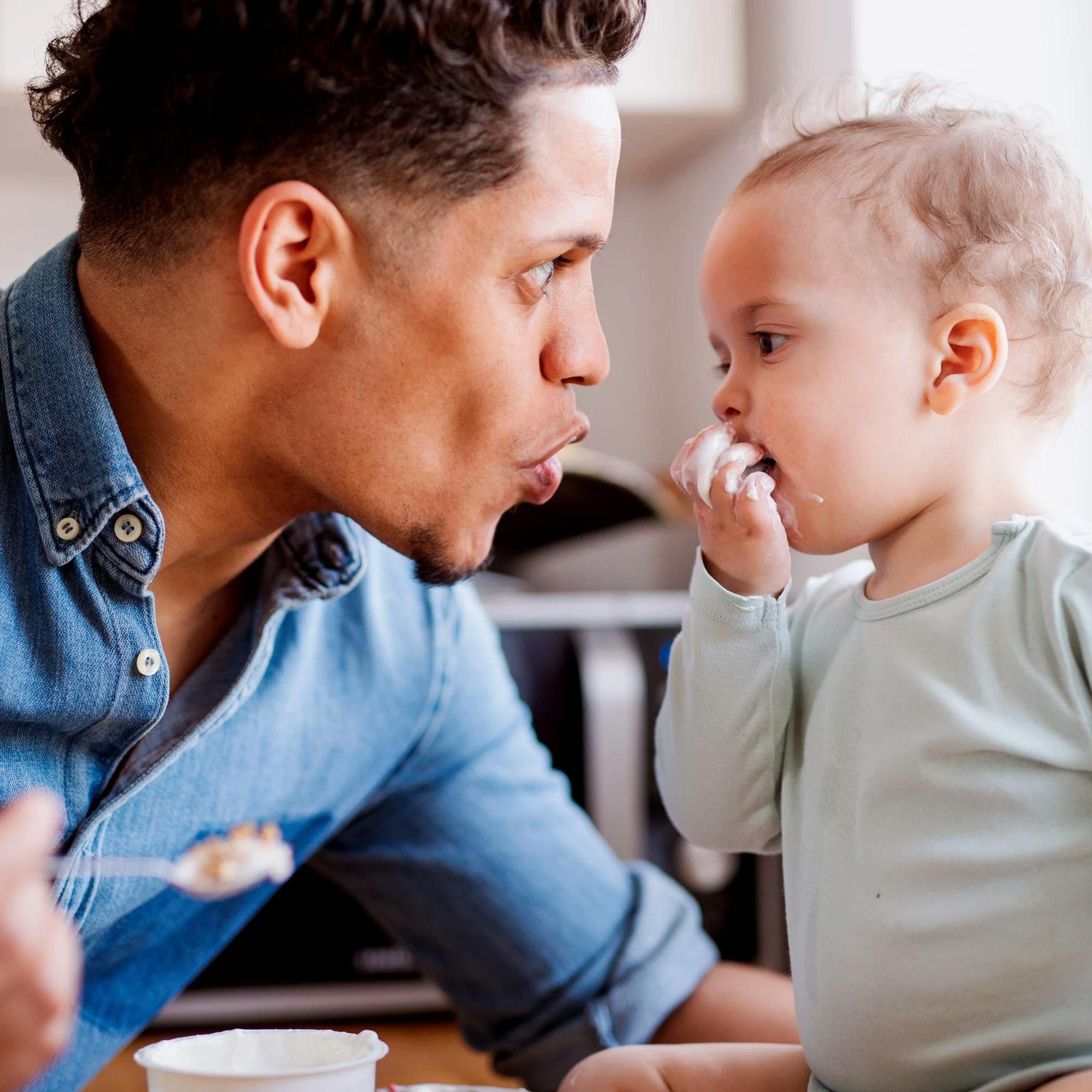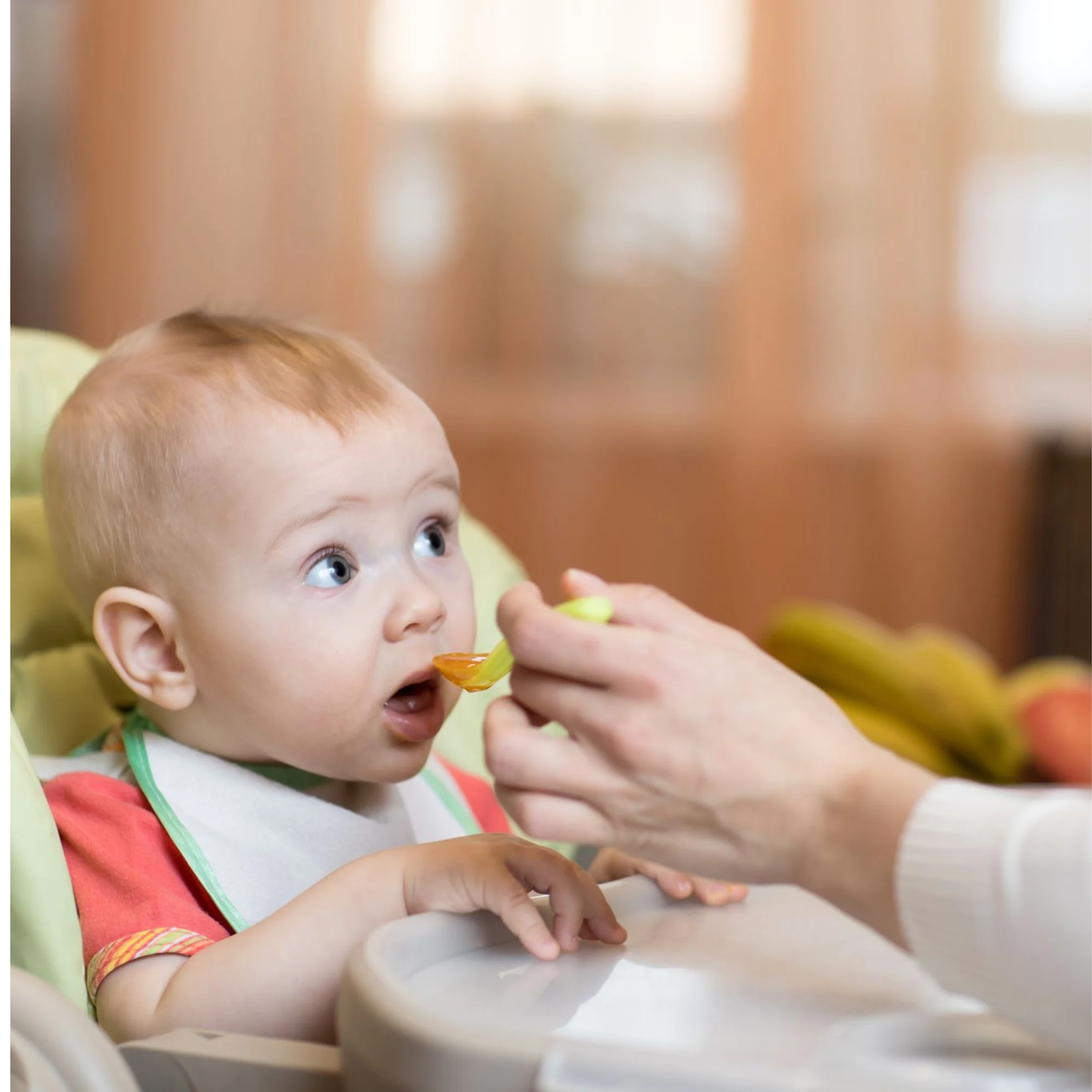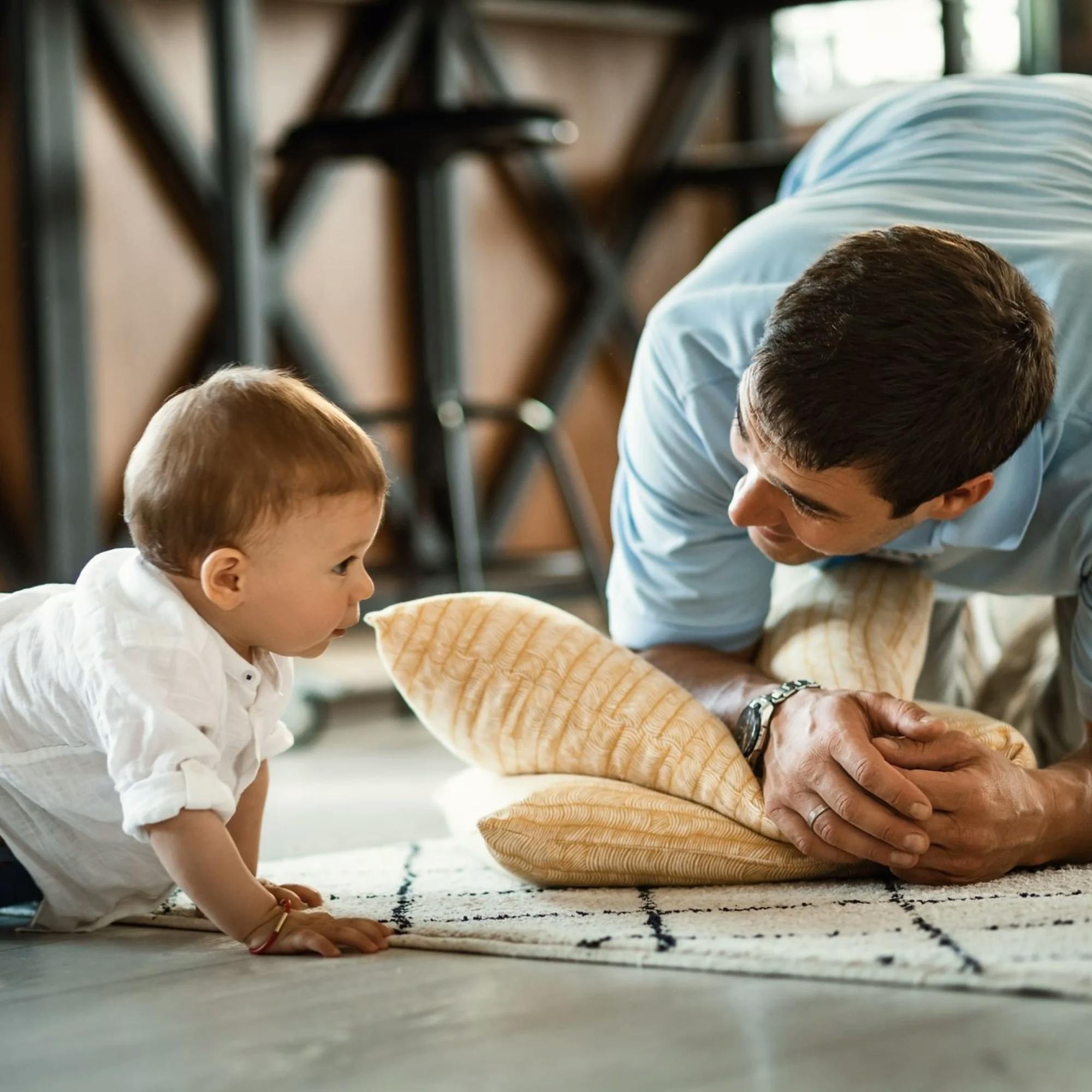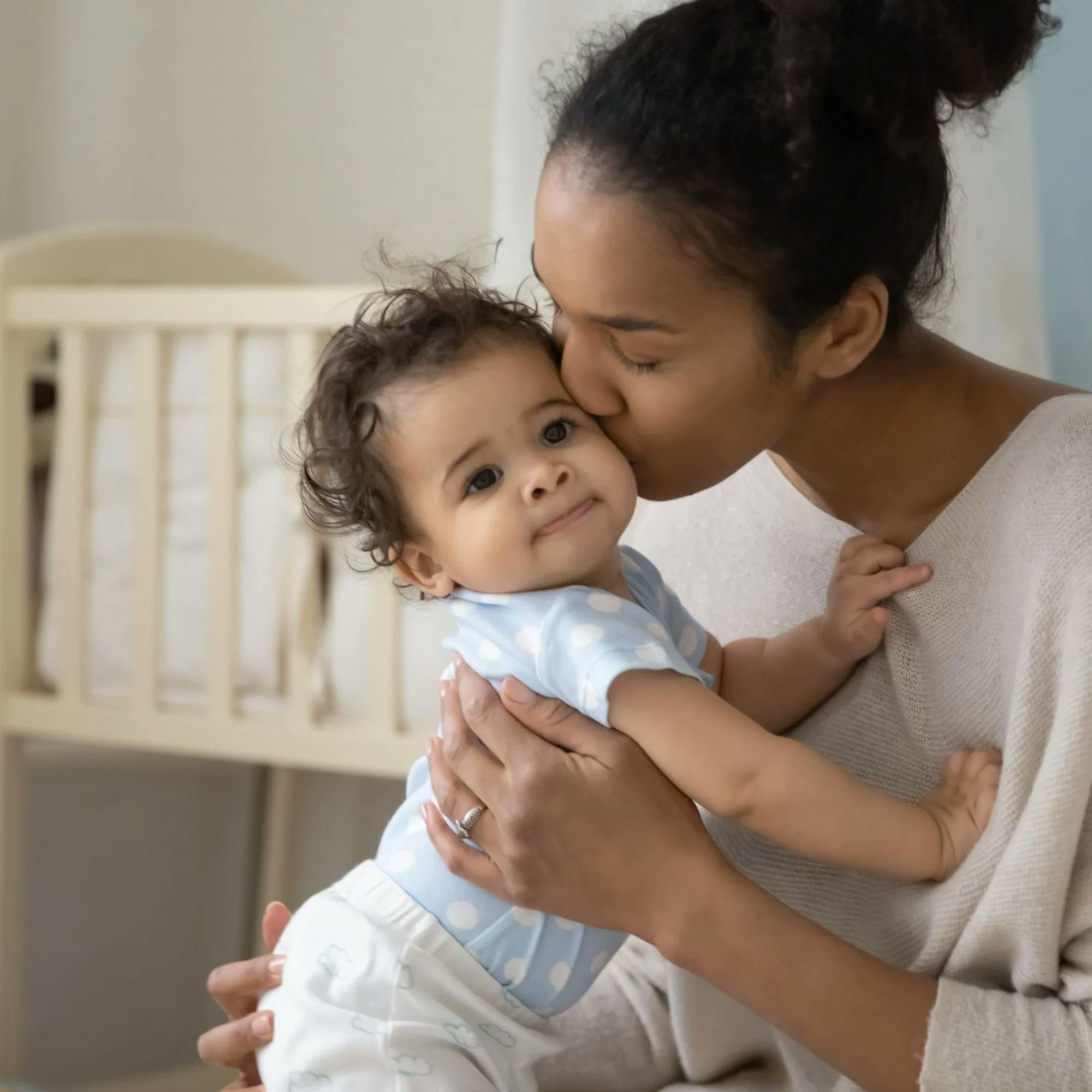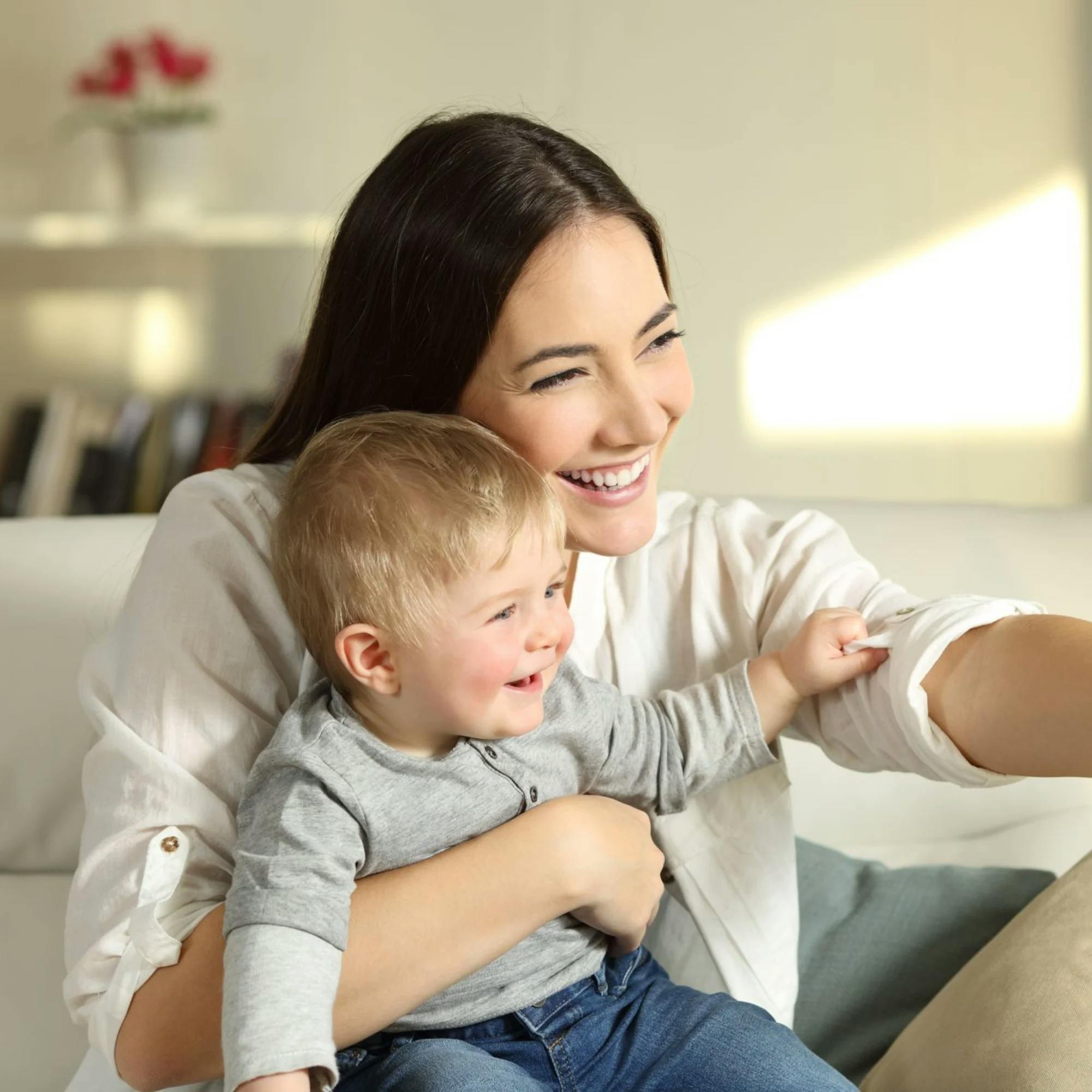Have you ever stopped to wonder exactly how children start talking? While it might seem to happen naturally, there are lots of factors leading up to the day your toddler says those magical first words.
Let’s take a closer look at how toddlers learn to talk–and what parents and caregivers can do to help them along the way. Like so many things in life, your child is looking to you to teach them!
Free speech check
How well is your child speaking for their age? Find out with our free 5-minute online screener. No signup required, just answers.
 Start the screener
Start the screenerHow babies learn language
Even from the early newborn days, babies are taking in everything around them. Notice how a baby calms down when they hear their parent’s voice? They can already tell the difference between voices they know and don’t know. Over the next few months, they’ll learn to identify different tones of voice, as well as what different words mean.
Babies and toddlers learn to talk by:
Hearing their caregivers speak
Being read to
Interacting back-and-forth with others
Using gestures to communicate
As you can imagine, you play a big role in creating a language-rich environment for your child! Here’s what you can do to teach your child to talk.


Model language for your baby
Listening to spoken speech is one of the most important ways that babies learn language. If they don’t hear it, how can they learn? That’s why talking to your baby, even before they know how to answer you, is so important.
To do this, try modeling language for your child as often as possible. Talk to your child about what you’re doing together: playing with a toy, eating dinner, changing a diaper, going for a walk. The more words you let your child hear, the better!
Read books with your child
Another tip is to read often with your child–every day, if possible. Who doesn’t love to snuggle up with a good book? This is one simple way for your child to not only hear new words, but see pictures that match them.
Let your child hear your spoken sentences, but also spend time pointing to pictures and naming the objects, people, and actions in the book. Maybe a dog is running, or a boy is climbing. Focus on nouns and verbs!

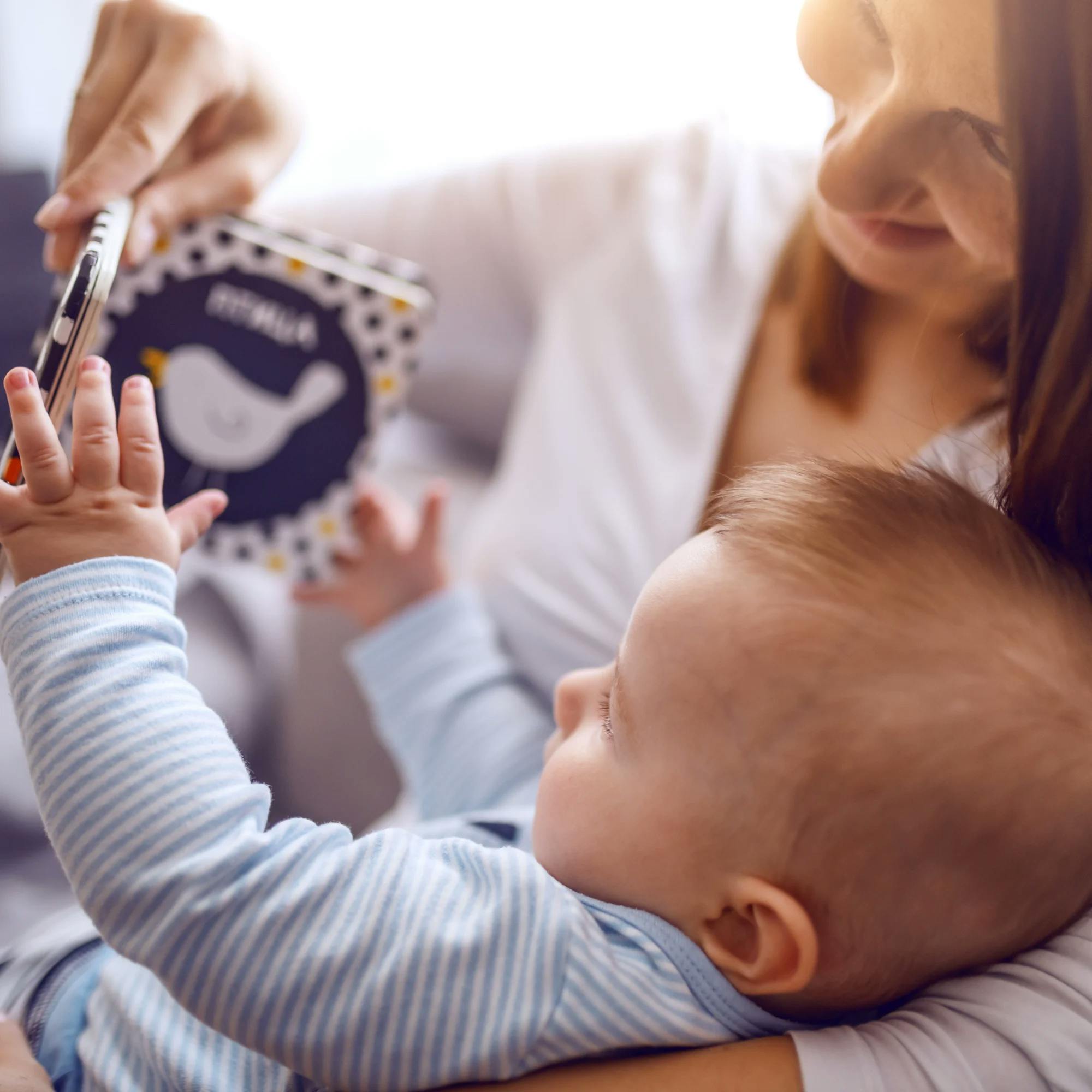
Talk in “parentese”
One way to make the most of the speech you model for your child is by using something called parentese. This is a specific way of speaking to your baby that gets their attention and places emphasis on words that help them learn.
Parentese includes:
Speaking at a higher pitch
Speaking slowly and clearly
Elongating your vowels (for example, “Let’s read a boo-oo-k”)
Exaggerating your facial expressions (such as using lots of happy, surprised, or sad faces when reading a book or playing together)
Using a variety of engaging tones of voice
Using simple sentences with correct grammar
Check out this quick (and adorable) video showing parentese in action. These are easy changes you can make in the way you talk with your baby–and they’ll make a huge difference in your child’s language abilities!


Have lots of back-and-forth interactions
Another way that babies and toddlers learn language is through back-and-forth interactions. Think about some early interactions you may have together. Maybe it’s playing peek-a-boo, rolling a ball back and forth, or even simply smiling and making sounds and faces to each other. All of these interactions require one person to do something, the other person to respond, and so on. Even though no words may be spoken, this is essentially what communication is!
Fun games like making your baby laugh or singing songs help grow the interactive skills needed to get them ready for talking. Not to mention, you can talk about the interaction. For example, one day your child may say “Boo!” during peek-a-boo. Or they may say “Car!” when pushing a toy car on a track with you. This is a perfect example of why play is so important for language development.

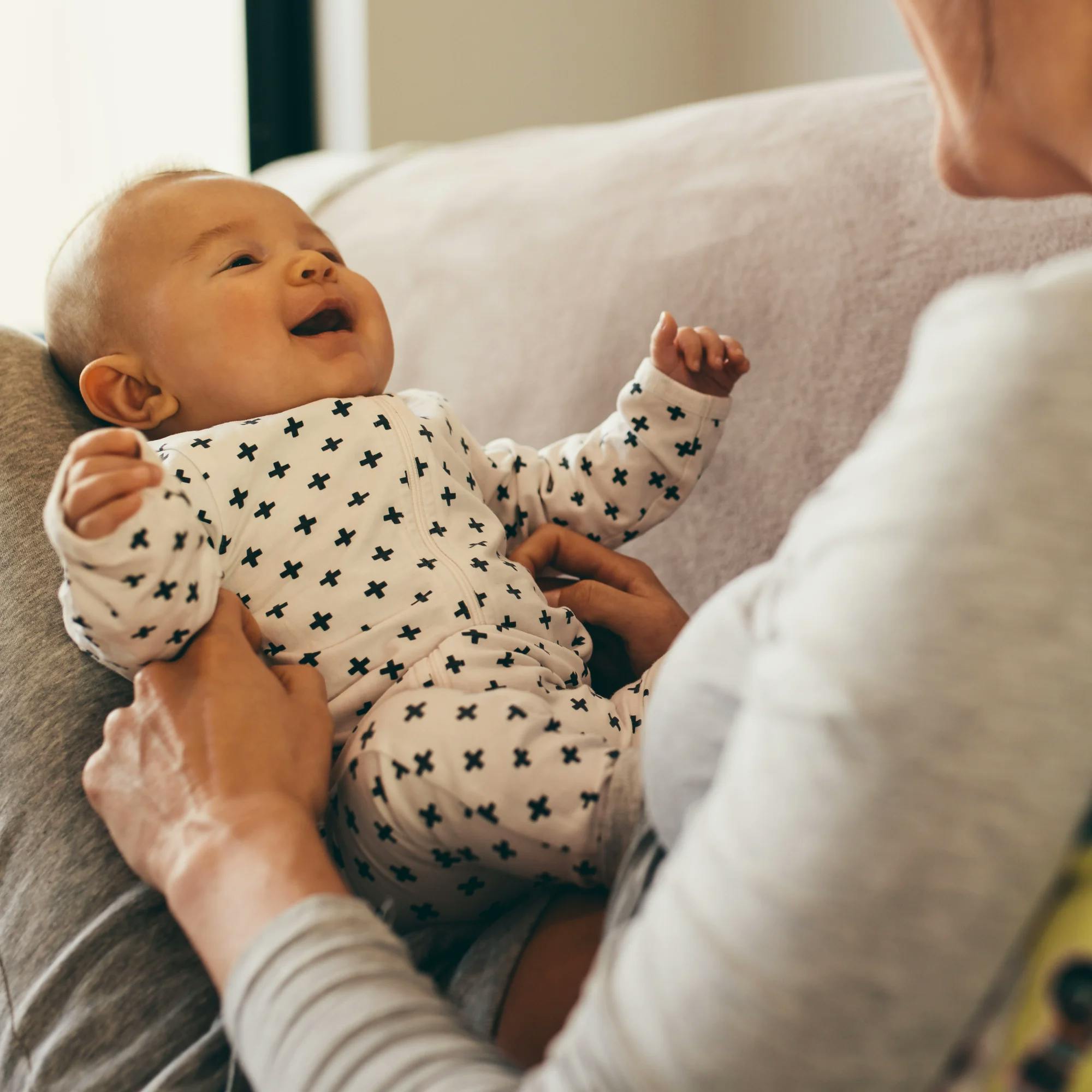
Teach your child to use signs or gestures
Before saying their first words, children can learn other ways to communicate, such as by using baby signs or gestures.
We define a sign or gesture as any action or movement of a part of the body, especially the hands or head, used to communicate an idea or meaning. Many gestures are made with our hands, like pointing or waving. Many baby signs come from American Sign Language.
Did you know that studies show that children who make more gestures early on will develop larger vocabularies as they age? One landmark study showed that children who first produced a gesture and word combination (making a gesture while saying the word) more quickly learned to speak in short, two-word phrases. That’s an important milestone for 2-years-olds!
Studies show that children who make more gestures early on will develop larger vocabularies as they age.
Focus on teaching your child signs and gestures for words that help them communicate and ask for things they want. Some examples might be the signs for “more,” “milk,” “all done,” “cup,” “eat,” or “go.” This can help ease frustration and grow your child’s confidence–they’ve found a way to be understood! This will encourage them to communicate even more.
Encourage your baby to babble
Before children say their first words, you’ll usually hear them making sounds (called vocalizations). At around 6 months old, babies will likely begin babbling more. Even if they aren’t quite using “mamama” or “dadada” for Mama and Dada quite yet, they will with time! They’ll begin babbling by making lots of sounds and responding to things they see and hear. Over time, these little baby sounds will begin sounding more and more like true words.
To help your child learn to talk, encourage them to babble! You can do this by making sounds along with them, and giving them sounds and words to try to imitate. Practice face-to-face, or even in front of a mirror, so your child can see how our mouths move to make speech sounds.
What to do if your toddler isn’t talking
Most toddlers say their first word at around 12 months old. And by 24 months old, most toddlers are using at least some two-word phrases to communicate, like “Help me” or “More cracker.” Remember, at this early age, their pronunciation doesn’t have to be 100% perfect. However, toddlers are typically saying some clear words and phrases by age 2.
If you're concerned that your toddler isn’t talking, contact a speech therapist to get their input. They can perform an evaluation to look for any differences in your toddler’s development that could put them at risk of falling behind. Every child deserves the right to communicate clearly. The sooner they can get the support they need, the sooner they can begin making progress!
How Expressable Can Help
Concerned your child isn't reaching age-expected milestones? Looking for communication support from a professional? Expressable is a national online speech therapy practice serving children and adults. We treat all major areas of communication and feeding, offer flexible hours including evenings and weekends, and accept most major health insurance plans. We’re proud to have earned more than 3,000 5-star reviews from our clients (4.9/5 average).
Our therapy model is centered on parent and caregiver involvement. Research proves that empowering caregivers to participate in their loved one’s therapy leads to better outcomes. That’s why we combine live, 1-on-1 speech therapy with personalized education and home practice activities for faster progress.
Communication is more than words. It’s how we share how we feel and show who we are. We’re here to help you or your child do just that.

 Abby Barnes, M.S., CCC-SLP
Abby Barnes, M.S., CCC-SLP






